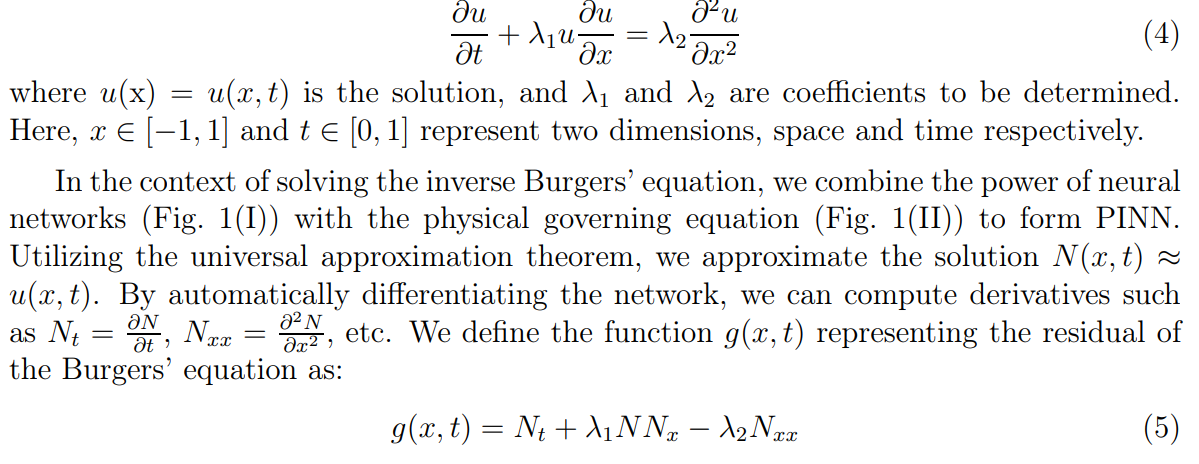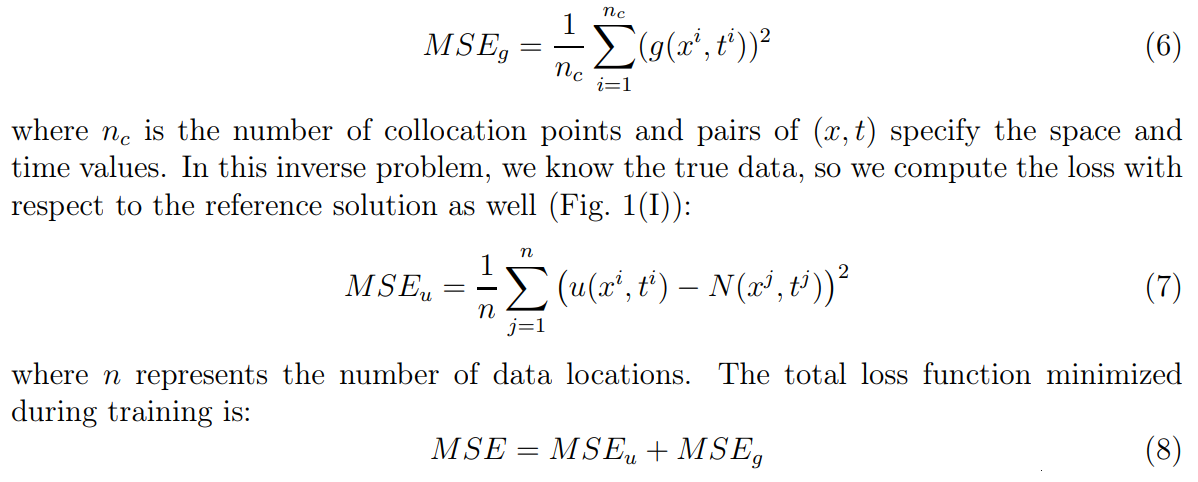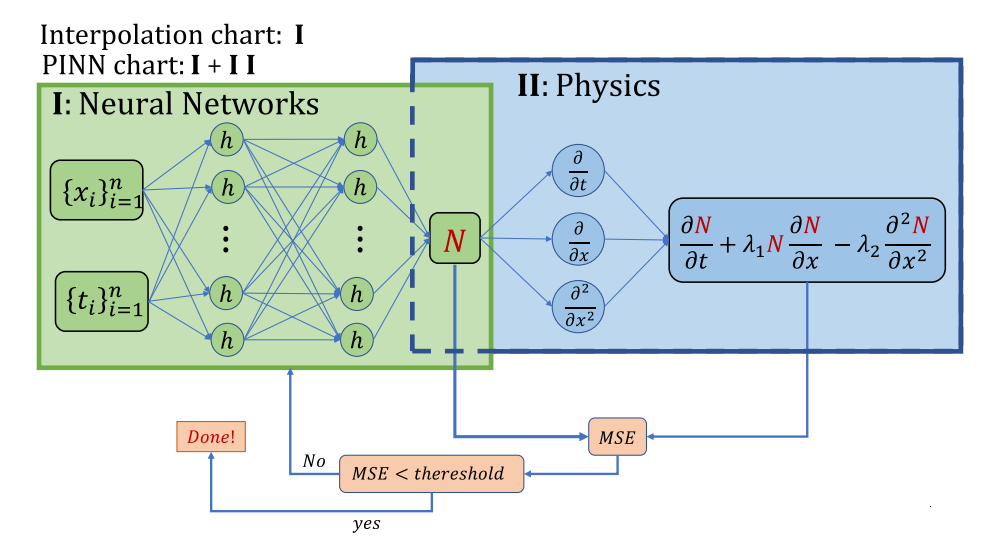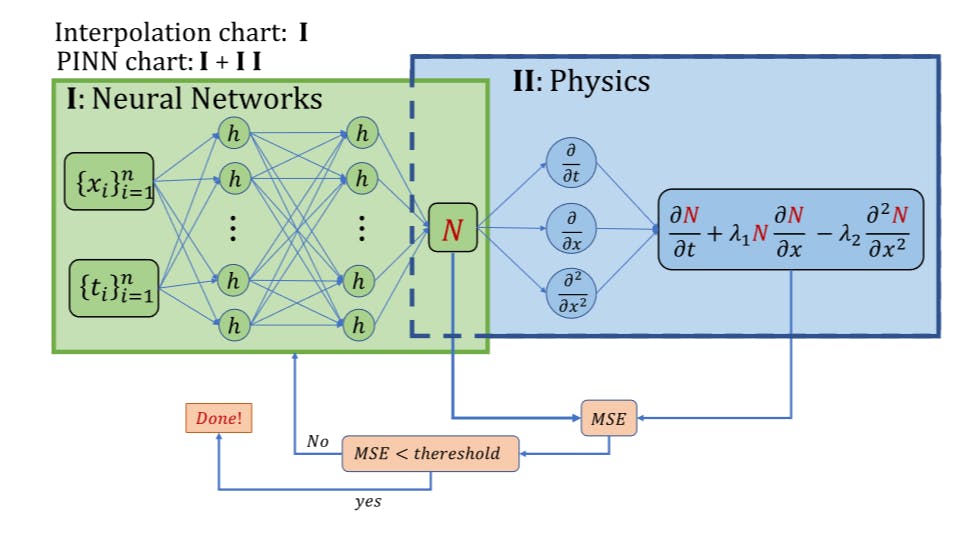This paper is available on arxiv under CC 4.0 license.
Authors:
(1) Amir Noorizadegan, Department of Civil Engineering, National Taiwan University;
(2) D.L. Young, Core Tech System Co. Ltd, Moldex3D, Department of Civil Engineering, National Taiwan University & [email protected];
(3) Y.C. Hon, Department of Mathematics, City University of Hong Kong;
(4) C.S. Chen, Department of Civil Engineering, National Taiwan University & [email protected].
Table of Links
PINN for Solving Inverse Burgers’ Equation
Results, Acknowledgments & References
3 PINN for Solving Inverse Burgers’ Equation
In this section, we explore the application of Physics-Informed Neural Networks (PINN) [1] to solve the inverse Burgers’ equation in one dimension. The 1D Burgers’ equation is given by:

The PINNs loss function is given by (Fig. 1(II)):


We aim to minimize MSE to obtain the neural network parameters (w, bi) and the Burgers’ equation parameters λ1 and λ2.

